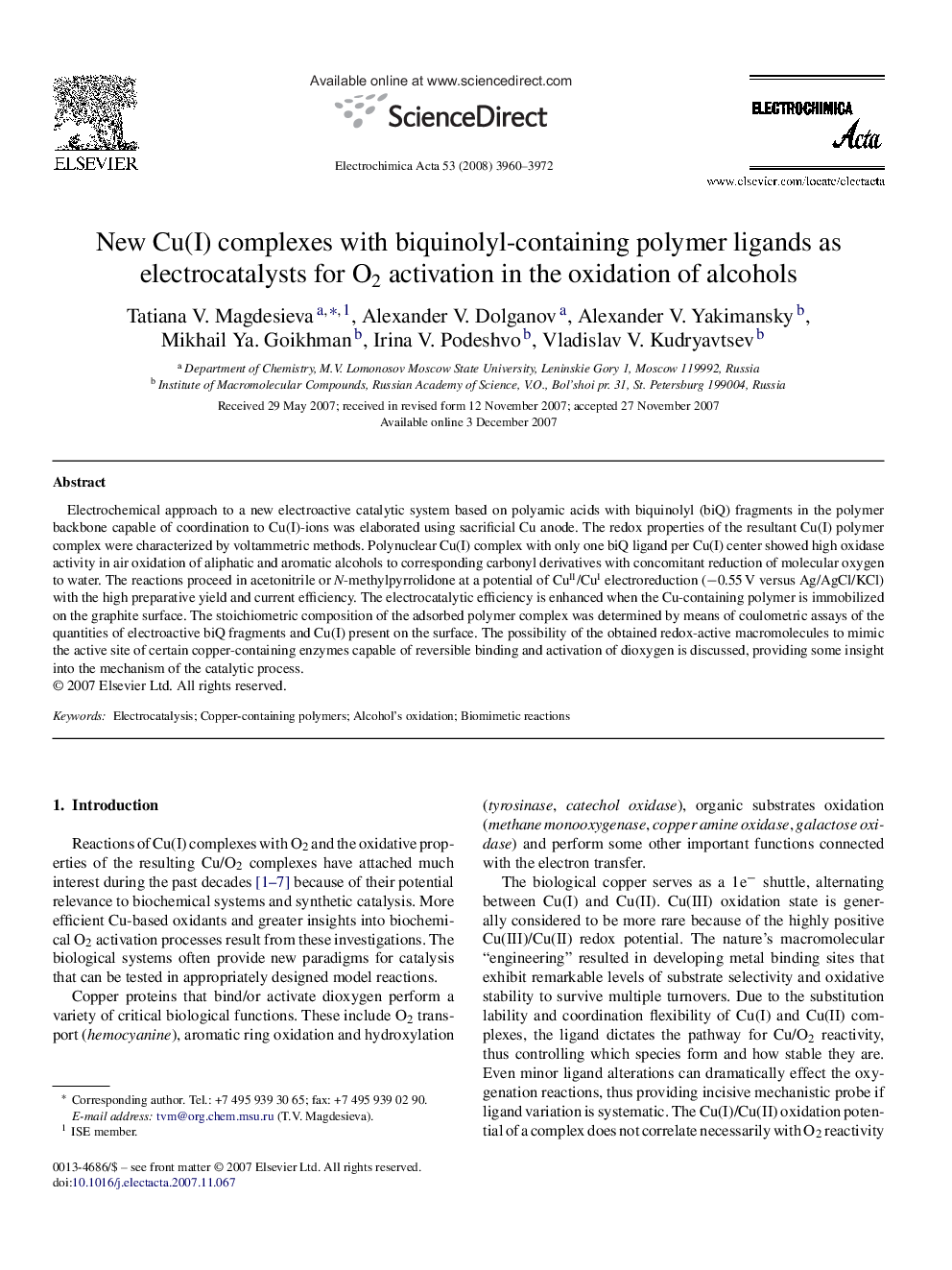| Article ID | Journal | Published Year | Pages | File Type |
|---|---|---|---|---|
| 195102 | Electrochimica Acta | 2008 | 13 Pages |
Electrochemical approach to a new electroactive catalytic system based on polyamic acids with biquinolyl (biQ) fragments in the polymer backbone capable of coordination to Cu(I)-ions was elaborated using sacrificial Cu anode. The redox properties of the resultant Cu(I) polymer complex were characterized by voltammetric methods. Polynuclear Cu(I) complex with only one biQ ligand per Cu(I) center showed high oxidase activity in air oxidation of aliphatic and aromatic alcohols to corresponding carbonyl derivatives with concomitant reduction of molecular oxygen to water. The reactions proceed in acetonitrile or N-methylpyrrolidone at a potential of CuII/CuI electroreduction (−0.55 V versus Ag/AgCl/KCl) with the high preparative yield and current efficiency. The electrocatalytic efficiency is enhanced when the Cu-containing polymer is immobilized on the graphite surface. The stoichiometric composition of the adsorbed polymer complex was determined by means of coulometric assays of the quantities of electroactive biQ fragments and Cu(I) present on the surface. The possibility of the obtained redox-active macromolecules to mimic the active site of certain copper-containing enzymes capable of reversible binding and activation of dioxygen is discussed, providing some insight into the mechanism of the catalytic process.
